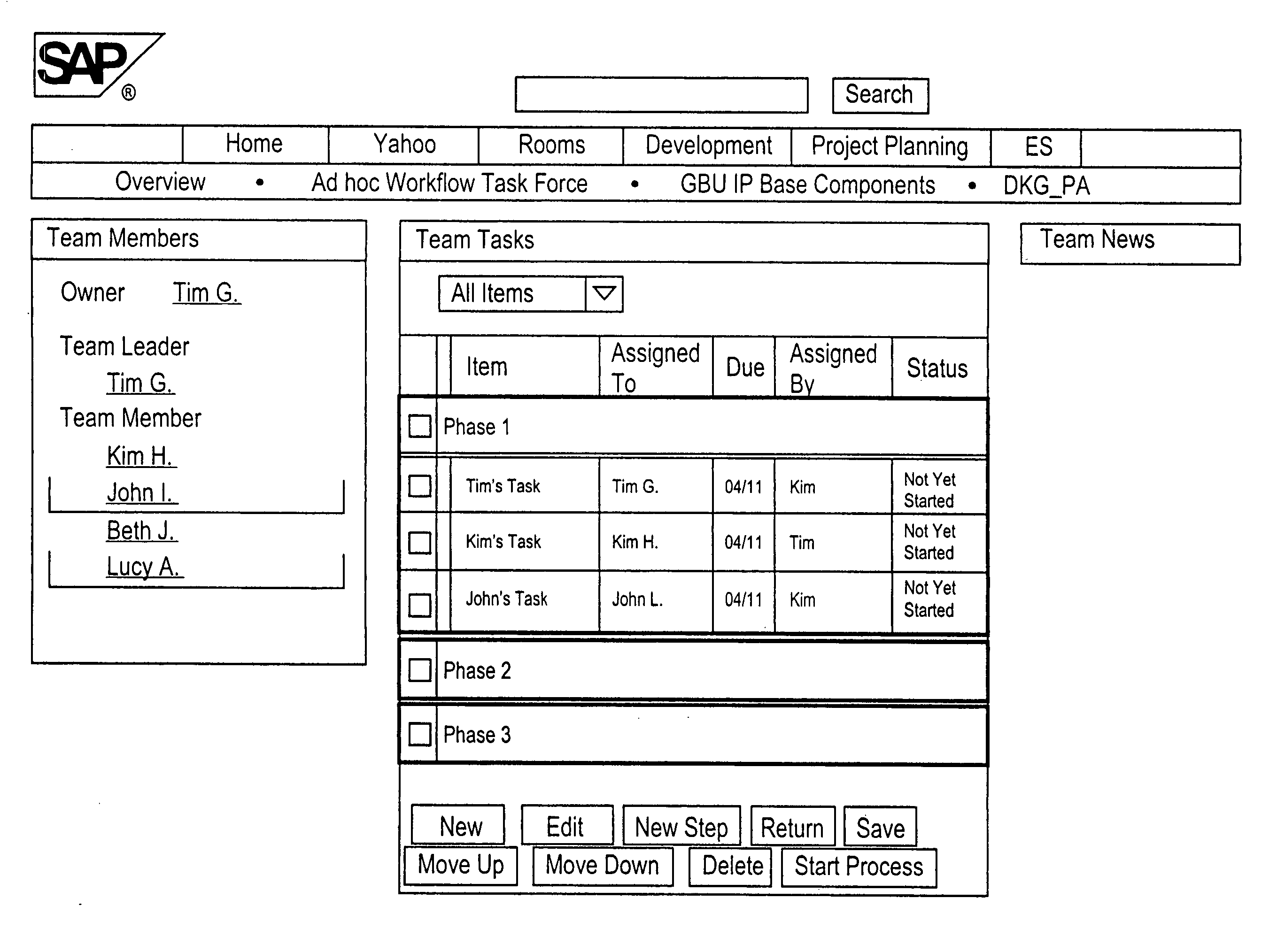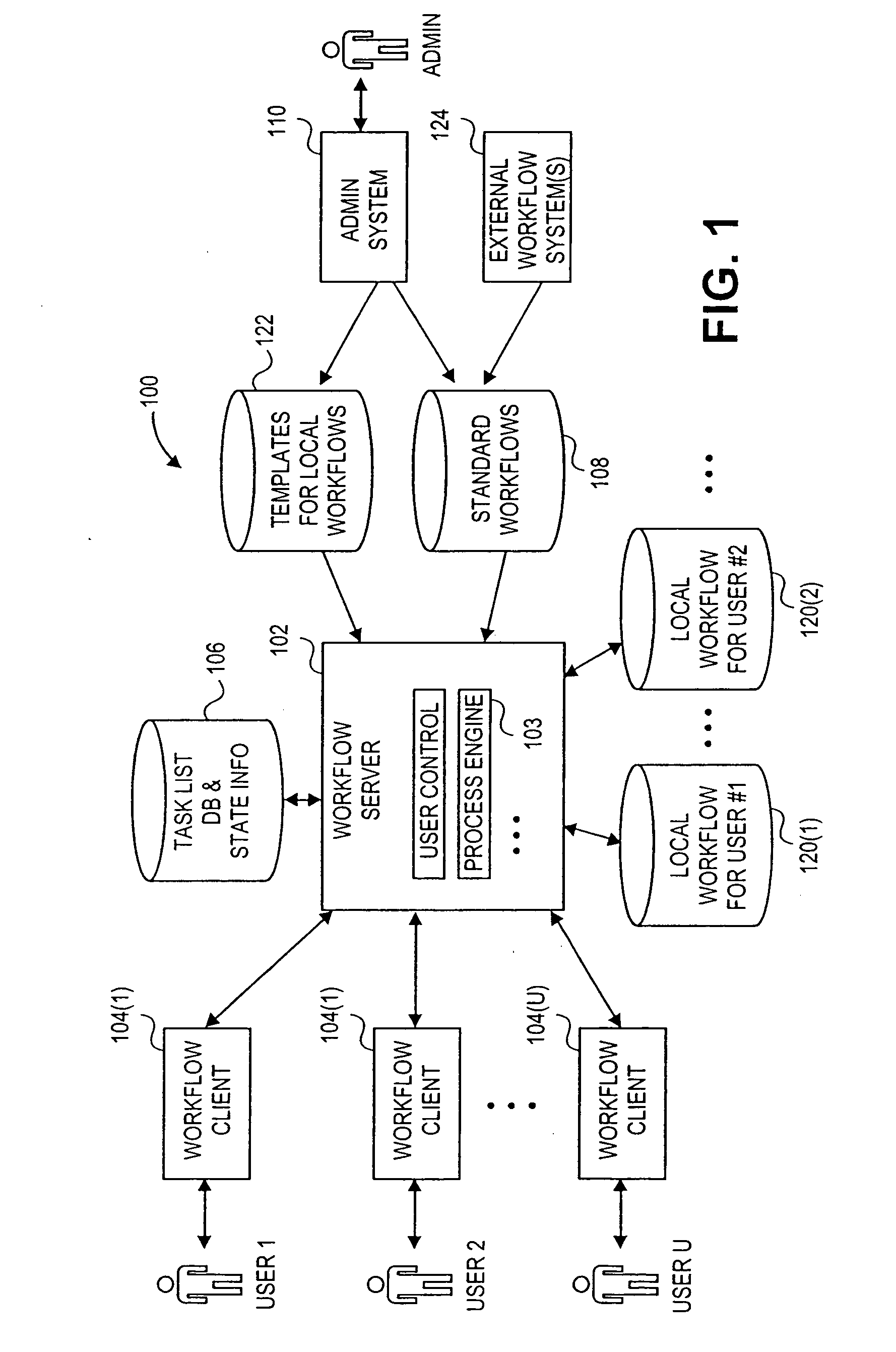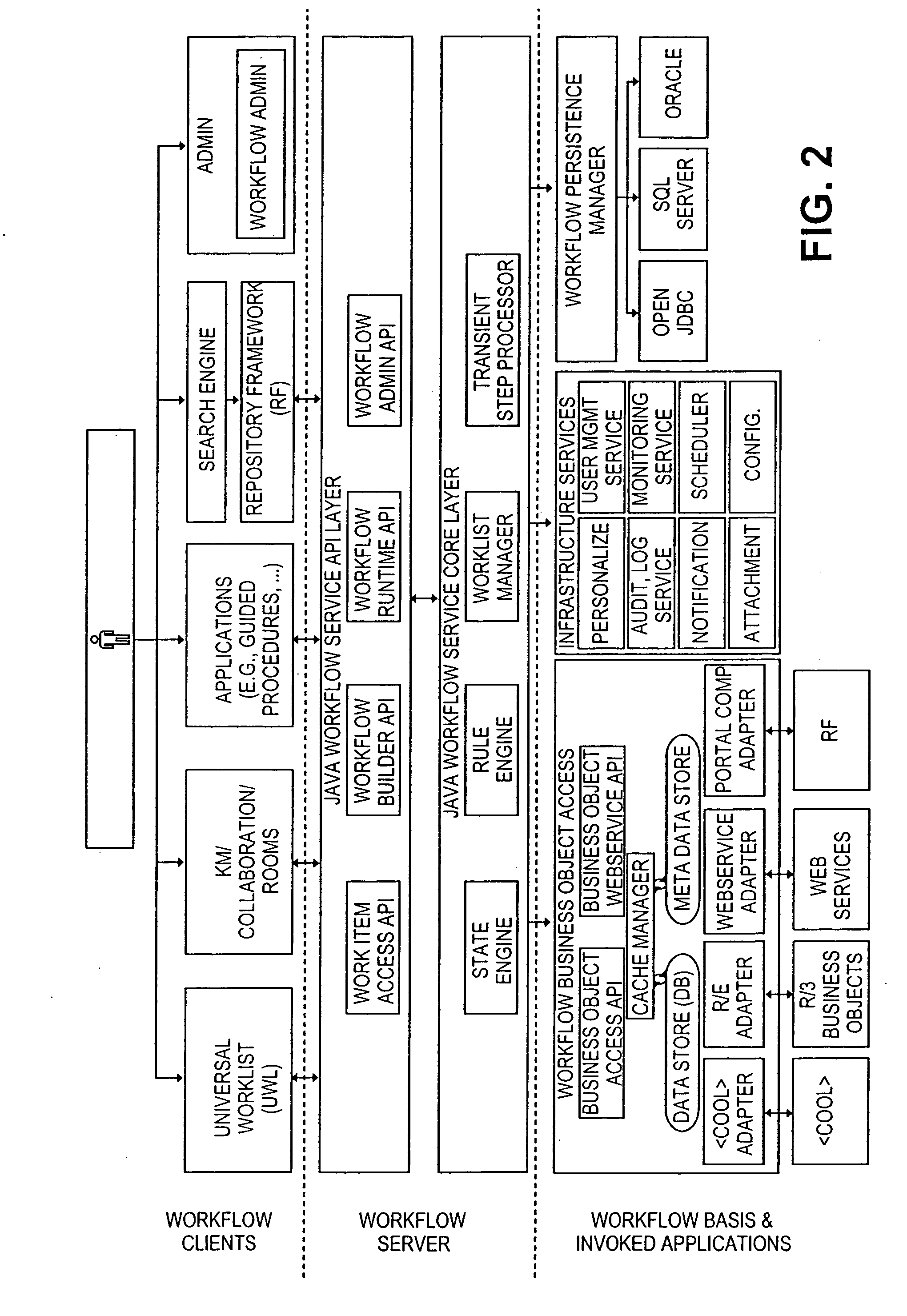End user oriented workflow approach including structured processing of ad hoc workflows with a collaborative process engine
a workflow engine and workflow technology, applied in the field of end user oriented workflow approach, can solve the problems of incomplete comprehensive solutions, elusive collaboration goals, and groupware products failing to deliver anything more than marginal improvements to existing e-mail and document management solutions
- Summary
- Abstract
- Description
- Claims
- Application Information
AI Technical Summary
Benefits of technology
Problems solved by technology
Method used
Image
Examples
Embodiment Construction
[0023] In a structured workflow system, a project is defined by a set of processes, each of which might have multiple steps, tasks, triggers and / or actions (work items). A workflow engine provides mechanisms for executing and scheduling the work items in a defined way.
[0024] Some groupware applications allow users to jointly define tasks of a project, more or less just storing the task information and making sure that these tasks are assigned to task owners, without really being able to control execution orders for the tasks or other control flow dependencies dealt with. For example, most groupware applications could not address a workflow such as: “Execute task B after task A, but only if the value of X is greater than Y. In all other cases, execute task C immediately after task A.”
[0025] To address this need, the workflow engine handles imposing and executing control flow dependencies between tasks, thus providing a smooth transition from totally unstructured work to semi-structu...
PUM
 Login to View More
Login to View More Abstract
Description
Claims
Application Information
 Login to View More
Login to View More - R&D
- Intellectual Property
- Life Sciences
- Materials
- Tech Scout
- Unparalleled Data Quality
- Higher Quality Content
- 60% Fewer Hallucinations
Browse by: Latest US Patents, China's latest patents, Technical Efficacy Thesaurus, Application Domain, Technology Topic, Popular Technical Reports.
© 2025 PatSnap. All rights reserved.Legal|Privacy policy|Modern Slavery Act Transparency Statement|Sitemap|About US| Contact US: help@patsnap.com



